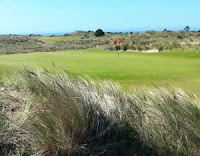 Growing season in Southern California is year round,
Growing season in Southern California is year round,  but some vegetables susceptible to chill start dying off in the fall. My next-to-last harvest of eggplants and tomatoes included heirloom varieties of white and yellow eggplant (White Beauty and Thai Yellow Egg) from Hirt's Gardens seed company. Browse the Hirt's website for unusual varieties of vegetables, fruits and flowers--like these miniature Mexican watermelons that are only 1-2" at maturity
but some vegetables susceptible to chill start dying off in the fall. My next-to-last harvest of eggplants and tomatoes included heirloom varieties of white and yellow eggplant (White Beauty and Thai Yellow Egg) from Hirt's Gardens seed company. Browse the Hirt's website for unusual varieties of vegetables, fruits and flowers--like these miniature Mexican watermelons that are only 1-2" at maturity  and the fractal-like Romanesco broccoli.
and the fractal-like Romanesco broccoli.An invitation to a dinner party spurred me to whip up this appetizer with eggplant, tomato, garlic and cilantro from my garden:
ROASTED MEDITERRANEAN VEGETABLE APPETIZER:
3 cups eggplant (about one large globe or a half dozen Japanese eggplant)
2 cups ripe tomato (about one giant heirloom or 7 Roma tomatoes)
4 cloves garlic

1 Tbsp. basil
spray olive oil
1/4 cup olive oil
1/4 cup minced cilantro
juice of 1/4 lemon
1/4 cup pistachio nuts
1/4 tsp. freshly ground pepper
salt to taste
Preheat the oven to 350 degrees. Boil a pot of water and pop the tomatoes in for a minute or just until the skin bursts, remove, cool, seed and slice them. Peel and coarsely chop the garlic--not too small so the pieces do not crisp in the roasting process. Peel and cut the eggplants into bite sized pieces and lightly salt them. Spray a baking pan with olive oil and spread the tomato slices and eggplant on the bottom. Press the garlic into the tomatoes and spray the top well with olive oil. Sprinkle the basil leaves on top. Bake for about 15 minutes, or until the tomato is soft. Stir the vegetables together and bake another 45 minutes, stirring occasionally. When the eggplant is soft and the juice from the tomato absorbed, remove from the oven to your serving dish. Stir in the olive oil, cilantro, lemon, pistachio nuts and pepper. Wait to add salt to taste, as it may not be necessary.
Serve with pita wedges, a soft cheese like Brie or Fontina, and a crisp, refreshing glass of the 2008 Carmichael "Grigio e Bianco" Pinot Grigio or 2009 Rex Hill Pinot Gris--both available from Touring and Tasting for purchase with FREE shipping on or before Nov. 3rd.
Thanksgiving Wine Pairing 101
This is the first in a four part series:
What To Pour With Your Thanksgiving Feast
- Today: Light And Crisp White Wines
- Nov. 4: Fruity And Medium Bodied Red Wines
- Nov 11: Oaked Or Full Bodied White Wines
- Nov 18: Rich And Powerful Red Wines
For perfect Thanksgiving wines, there are some easy guidelines, backed by science and years of tradition. However, your own taste and preference takes precedence--if you prefer Cabernet Sauvignon with turkey or Chardonnay with everything, then your taste buds rule!
Here are some basic guidelines:
- Balance oils and butter fat with acidity--heavy gravies and sauces rich with butter and oil will be overwhelming with a viscous, buttery-tasting wine liked oaked Chardonnay that has gone through malolactic fermentation. The wines in our free shipping special were chosen to have crisp acidity to balance heavy food.
- Match the texture and intensity--light and medium bodied wines go well with lighter meats, such a turkey or fish, a bold red wine would overpower the lighter foods, for example, a powerful Zinfandel overpowers delicate foods but finds its match in spicy bbq ribs. The texture of a wine matters: the mouth-feel and weight should complement the food. Medium-bodied whites such as this week's wine special will do well with soups, vegetables, rolls and turkey.
- Look for complementary flavors--just as one squeezes a bit of lemon on fish, a crisp wine with a lemony zing will refresh your palate between bites. The slight saltiness of ham will be balanced with a wine with fruit forward taste like the Challenger Ridge Viognier.
- Avoid known mis-matches--the science behind taste has discovered the chemical compounds behind flavors. For example, limonene in creates a citrus flavor. So, knowing some science can help us avoid some bad matches: iodine in fish reacts with tannins in red wine to give an unpleasant metallic taste. Artichokes contain cynarin that makes a wine paired with it taste cloyingly sweet, unless they are cooked in a deep-fryer, which neutralizes the cynarin--a good reason to pair them with a robust, tannic Sangiovese. Other traditionally avoided pairings are dry wines with very sweet foods which will make them taste bitter, herbal or grassy wines like Sauvignon Blanc with red meats, and Cabernet Sauvignon with white meats.
Good wine pairings with Viognier: chicken and turkey, grilled fish, apple salad, dishes with cinnamon.































